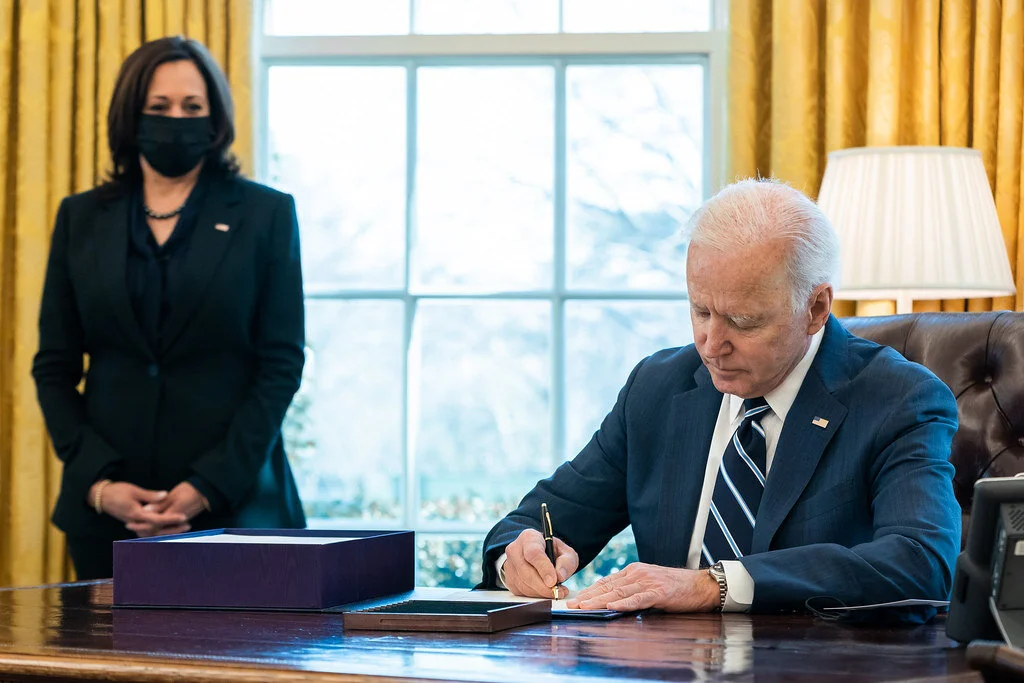Cordova Times: Seafood harvesters applaud 30×30 report
Seafood harvesters applaud 30×30 report
President Joe Biden and Vice President Kamala Harris in the Oval Office of the White House. (March 11, 2021) Photo courtesy of Adam Schultz/The White House.
By Margaret Bauman
May 15, 2021
A Biden administration plan to conserve at least 30% of federal lands and oceans by 2030 is winning applause from the seafood industry, but questions abound elsewhere, raising political obstacles.
Just about 12% of the nation’s land area is currently under some form of environmental protection, along with about 26% of the country’s ocean areas.
The plan, an executive order issued by the Biden administration, and popularized as the “30×30” initiative, has won support from the harvester and processor sector of Alaska fisheries and others in that industry, but farmers and ranchers elsewhere remain skeptical.
The seafood industry, with concerns about fish habitat, sees the plan as a way to protect that habitat from changing climate conditions. Meanwhile, farmers, ranchers and other landowners worry that they may be forced to conserve or sell acres of their lands for conservation.
Two “shovel ready” climate change solutions that already exist in Alaska are critical fish habitat in Bristol Bay and the Tongass National Forest, said Linda Behnken, executive director of the Alaska Longline Fishermen’s Association, which represents hundreds of small boat fishermen on coastal Alaska communities. “Conserving Bristol Bay and the Tongass ecosystems will provide huge benefits for Alaska fisheries and coastal communities while buffering Alaska’s iconic fisheries against the accelerating impacts of climate change,” she said.
The plan is also supported by the At-Sea Processors Association and Seafood Harvesters of America. “The Biden administration has committed to maintaining and extending the collaborative, stakeholder-driven and science-based approaches to ocean conservation that have been such a bipartisan success story,” said Matt Tinning, director of sustainability and public affairs for the At-Sea Processors Association.
“Area-based conservation measures are one of the important tools that scientists and managers have at their disposal in achieving marine biodiversity goals,” said Leigh Habegger, executive director of Seafood Harvesters of America.
Still, the political obstacles are substantial, said Yale Climate Connections, a nonpartisan multimedia service at Yale University in New Haven, Connecticut, providing original web-based reporting on climate change issues.
In total, such a plan would require environmental protections for a combined land area equal to twice the size of Texas, the publication reported in March, in an article written by freelance environmental journalist Bruce Lieberman.
The Biden administration’s new preliminary report to the National Climate Task Force concludes that the nation has had tremendous success in forging solutions to environmental problems and experience in harnessing the bounties of the natural world. As the nation recovers and rebuilds in the wake of the novel coronavirus pandemic, now is the time to support the natural and cultural resource priorities of tribal nations and more, the report concludes.

